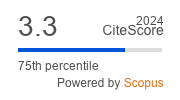Article | Open Access
Configuring the Older Non-User: Between Research, Policy and Practice of Digital Exclusion
| Views: | 9064 | | | Downloads: | 4889 |
Abstract: Older adults face significant barriers when accessing the Internet. What can be done to address these barriers? This article analyses existing strategies to tackle the age-related digital divide on three different levels: research, policy and practice. It analyses (1) scientific conceptualisations that are used when studying Internet use and non-use in later life, (2) policies that address older adults’ Internet (non-)use in Austria and (3) characteristics of older Austrian non-users of the Internet based on the Survey of Health, Ageing and Retirement in Europe (SHARE, wave 6). Analysis shows that Austrian policy tends to emphasise the individual responsibility to learn digital technologies, while placing a lower priority on structural issues, such as investments in infrastructure. However, SHARE data shows that only a small percentage of older non-users of the Internet is in fact reached with such interventions. Thus, this article suggests that policy needs to base its strategies on more refined understandings of Internet use and non-use in later life as well as a more nuanced image of the older non-user. A perspective of critical-cultural gerontology, as laid out in this article, highlights that technology adoption is a domestication process that takes place in the everyday lives of older adults, and it is these processes that interventions that tackle the age-related digital divide should take as a starting point.
Keywords: age; ageing; Austria; digital divide; digital exclusion; digital policies
Published:
© Vera Gallistl, Rebekka Rohner, Alexander Seifert, Anna Wanka. This is an open access article distributed under the terms of the Creative Commons Attribution 4.0 license (http://creativecommons.org/licenses/by/4.0), which permits any use, distribution, and reproduction of the work without further permission provided the original author(s) and source are credited.


